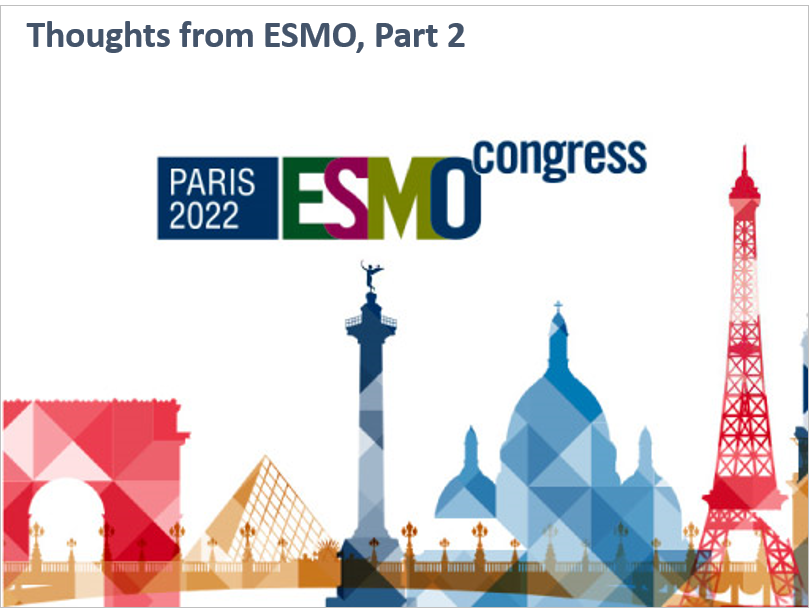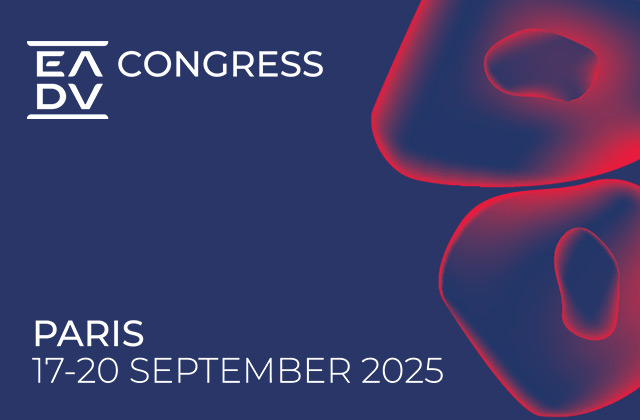
As highlighted in our previous blog post, the Netherlands Cancer Institute (NKI) demonstrated compelling efficacy data from the first randomized, controlled Phase 3 study comparing tumor-infiltrating lymphocytes (TILs) to a checkpoint immunotherapy (Yervoy®) in advanced melanoma. Earlier this year, Iovance Biotherapeutics announced positive clinical data for its TIL (lifileucel), also in advanced melanoma.
TIL therapy has the potential to be the first approved one-time cell therapy for a solid tumor cancer. NKI researchers are now working to obtain EMA approval for M14TIL, while Iovance has initiated a rolling BLA submission to the FDA.
With data available from two late-stage TIL trials, both in melanoma, it is only natural to want to compare the outcomes despite a lack of head-to-head data. Let’s take a quick look to see what questions might arise, what insights we can gain, and what the implications might be.
Table 1: Cross-Trial Comparison of NKI’s M14TIL and Iovance’s lifileucel in Advanced Melanoma
Netherlands Cancer Institute (NCT02278887) Iovance Biotherapeutics (NCT02360579)
Intervention
Patient Population Unresectable melanoma (stage III or IV) Unresectable or metastatic melanoma (stage IIIc or IV)
Line of Therapy 1L-2L 2L+ (median: 3 prior lines)
Prior Treatment 89% of patients failed prior anti-PD-1 treatment Prior anti-PD-(L)1
Prior BRAF or BRAF/MEK inhibitor therapy if BRAFm positive
Efficacy M14TIL vs. Ipilimumab
ORR 49% vs. 21%
PFS 7.2 mos vs. 3.1 mos
Median follow-up 33.0 mos
OS 25.8 mos vs. 18.9 mosCohort 2 – Lifileucel
ORR 35%
DoR NR
Median follow-up 27.6 mos
Cohort 4 – Lifileucel
ORR 29%
DoR 10.4 mos
Median follow-up 23.5 mos
Notes:
- PFS = Progression Free Survival
- OS = Overall Survival
- ORR = Overall Response Rate
- DoR = Duration of Response
A Key Question
At face-value, it seems that patients receiving the NKI therapy M14TIL had better outcomes than patients who received Iovance’s lifileucel. M14TIL demonstrated an overall response rate (ORR) of 49% versus 31% across the lifileucel cohorts.
However, one stark difference between the two trial designs is the line of therapy in which TIL therapy was studied:
- M14TIL was studied in an advanced melanoma population with—at maximum—one prior therapy (except for ipilimumab).
- Lifileucel was studied in a “heavily pre-treated” advanced melanoma population (cohort 4).
This raises a big question: When would be optimal for integration of TIL therapy into the treatment algorithm in solid tumors? Is it best integrated early, or after patients have failed on other therapies? Understanding the optimal patient population can help manufacturers better design trials and ideally position TIL therapy across solid tumors.
Some Things to Consider
Diving deeper into this and other available data, we seek to explore patient outcomes for TIL therapy in different lines of therapy with consideration of:
- Prior anti-PD-1 therapy
- Patient health and overall disease burden
Prior Anti-PD-1 Therapy
These data track alongside previous findings that prior anti-PD-1 therapy impacts TIL therapy outcomes in advanced melanoma patients. Seitter, et al. previously hypothesized that prior anti-PD-1 therapy was associated with diminished outcomes with TIL, which raises an interesting question around the first-line use of TIL therapy.
This study compared outcomes of TIL therapy in patients who are refractory to anti–PD-1 therapy vs. those who were anti–PD-1 naïve. To do this, they pooled analyses across single-arm and randomized control trials in melanoma. Patients who were anti-PD-1 naïve had better outcomes than the anti-PD-1 refractory patients (ORR 56% vs. 24% and mean overall survival (mOS) of 28.5 months vs. 11.6 months).
The patients that were refractory to anti-PD-1 did not present at a more advanced disease state as compared to the anti-PD-1 naïve patients, with similar LDH, stage, and tumor burden. The exact mechanism of resistance is unclear – it is possible that PD-1 therapy alters the tumor microenvironment rendering these patients resistant to TIL therapy.
We cannot use the NKI or Iovance data to test this hypothesis, as all patients in the lifileucel trial—and a majority of patients (89%) in the M14TIL trial—received prior anti-PD-1 therapy.
Furthermore, the approval of Bristol Myers Squibb’s new anti-PD-1 Opdualag™ (43% ORR with 10.1 months of progression-free survival (PFS)) earlier this year has entrenched PD-1-based regimens as the 1L standard of care. So, it seems unlikely that TIL therapy will be able to play in the first-line space in the near future.
Within the PD-1 exposed patient population, TIL therapy development may be best- suited for PD-1 non-responders or patients who quickly develop resistance to PD-1 therapy:
- Within the lifileucel trial, reduced duration of prior anti-PD-1 therapy was shown to be associated with an increase in the duration of response (DOR) to lifileucel.
- It is also worth noting that the majority of patients (86%) were refractory to anti-PD-1 treatment in the M14TIL trial.
Rather than re-challenging with a PD-1, oncologists may achieve better clinical outcomes when using TIL therapy immediately upon detecting progression on anti-PD-1 therapy.
Patient Health and Disease Burden
In addition to considering prior anti-PD-1 therapy, these data suggest that TIL therapy may be less appropriate for sicker patients. Let’s compare and contrast cohorts 2 and 4 of the lifileucel trial.
Patients in cohort 4 exhibited a higher baseline disease burden. For example, those patients:
- Were more likely to have elevated baseline lactate dehydrogenase (LDH) levels, a well-known negative prognostic factor (64.4% versus 40.9% in cohort 2).
- Had a greater number of tumor lesions at baseline (83.9% versus 65.2% with more than three lesions)
Data from the lifileucel trial suggest that patients in cohort 2 (lower disease burden) had improved outcomes versus those in cohort 4 (higher disease burden). The overall response rate in cohort 2 was 35% vs. 29% in cohort 4. Also, the duration of response in cohort 2 was not reached vs. an average of 10.4 months in cohort 4.
Iovance plans to present additional data at a medical meeting later this year. This may shed light onto additional patient characteristics in both patient cohorts.
Implications
Anti-PD-1-based regimens have compelling outcomes in first-line advanced melanoma patients, leaving a clear unmet medical need in patients who are refractory to anti-PD-1 therapy. TIL therapy has highly compelling data with the potential to address this key unmet medical need.
Traditionally, oncology drug development seeks first approval in later lines of treatment. However, given the data, TIL therapy may not be able to reach its full potential if saved for later lines of therapy. Although directional, manufacturers can use these data to guide clinical trial design and prior lines of therapy within the inclusion criteria.
Sources:
- Iovance press release, Iovance Biotherapeutics Announces Positive Clinical Data for Lifileucel in Advanced Melanoma, May 26, 2022, https://ir.iovance.com/news-releases/news-release-details/iovance-biotherapeutics-announces-positive-clinical-data
- ESMO Congress 2022 Press Release, CELL THERAPY IMPROVES PROGRESSION-FREE SURVIVAL IN ADVANCED MELANOMA, FIRST PHASE 3 STUDY SHOWS, Sept. 10, 2022, https://www.esmo.org/newsroom/press-releases/cell-therapy-improves-progression-free-survival-in-advanced-melanoma-first-phase-3-study-shows
- Haanen, et al, Treatment with tumor-infiltrating lymphocytes (TIL) versus ipilimumab for advanced melanoma: Results from a multicenter, randomized phase III trial, Sept. 10, 2022, Annals of Oncology (2022) 33 (suppl_7): S808-S869. 10.1016/annonc/annonc1089, https://oncologypro.esmo.org/meeting-resources/esmo-congress/treatment-with-tumor-infiltrating-lymphocytes-til-versus-ipilimumab-for-advanced-melanoma-results-from-a-multicenter-randomized-phase-iii-trial
- Seitter SJ, Sherry RM, Yang JC, Robbins PF, Shindorf ML, Copeland AR, McGowan CT, Epstein M, Shelton TE, Langhan MM, Franco Z, Danforth DN, White DE, Rosenberg SA, Goff SL. Impact of Prior Treatment on the Efficacy of Adoptive Transfer of Tumor-Infiltrating Lymphocytes in Patients with Metastatic Melanoma. Clin Cancer Res. 2021 Oct 1;27(19):5289-5298. doi: 10.1158/1078-0432.CCR-21-1171. PMID: 34413159; PMCID: PMC8857302.








